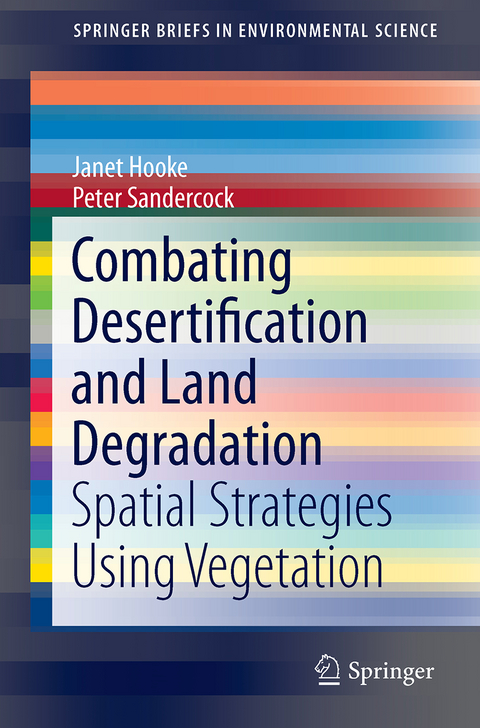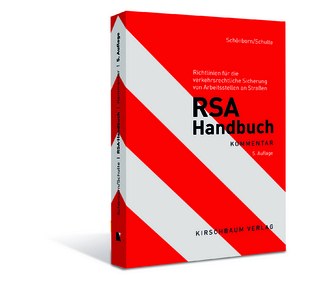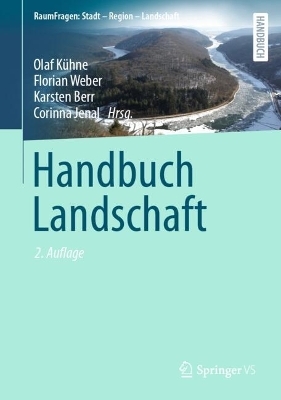
Combating Desertification and Land Degradation
Springer International Publishing (Verlag)
978-3-319-44449-9 (ISBN)
This book reports an approach developed to research and apply methods of assessing patterns of processes in the landscape, and suitability of different types of vegetation to mitigate soil erosion and sediment flux. Practical guidelines on a spatially strategic approach to management of land degradation at a range of spatial scales were produced. Originally developed for the Mediterranean environment, it has much wider potential global application. It provides researchers with methods to acquire the knowledge necessary for such an approach and provides practitioners with guidance on implementation and benefits of targeted methods of soil erosion control. It includes substantial information about processes and vegetation in the Mediterranean environment and the species effectiveness in soil erosion control.
Professor Janet Hooke geomorphologist, hydrologist and physical geographer with research interests in catchment processes and dynamics, flood incidence and impacts, connectivity, vegetation-flow interactions; impact of environmental and hydrological changes; catchment and channel management; sustainable management of catchments. Research on sustainable management of erosion and land degradation. Applied projects in coastal processes and sediment systems; sustainable management strategies on coasts. · International reputation for geomorphological and landscape dynamics research. · Extensive publications on fluvial environments and environmental management. · 30 years experience of field-based research projects. · Research Group leader, and director of major research projects · Chair succession, British Society for Geomorphology 1998-2001, Hon. Sec. 1989-92 · On Editorial Board of journals Geomorphology and Catena · Coordinator of EU project RECONDES examining spatial strategies of mitigating land degradation; production of practical guidelines · Projects on geomorphological sensitivity and opportunities for channel restoration and flood mitigation of channel instability in Britain and implications for policy; evaluation of strategies for conservation of fluvial scientific sites. · Research into effects of vegetation in channels and catchments and use in management of erosion and sedimentation in semi-arid lands.
Chapter 1 INTRODUCTION.- 1.1 Context and problem.-1.2 Processes and connectivity concept.-1.3 Benefits of use of vegetation.- 1.4 Approach.- 1.5 Research design and study area.- 1.6 Conclusion.-Chapter 2 MECHANISMS OF DEGRADATION AND IDENTIFICATION OF CONNECTIVITY AND EROSION HOTSPOTS.- 2.1 Soil erosion and degradation in desertified Mediterranean lands.- 2.2 Processes.- 2.3 Connectivity concept and methods.- 2.4 Methods and results at various scales.- 2.5 Conclusions.-Chapter 3 CONDITIONS FOR GROWTH OF PLANTS.- 3.1 Introduction.- 3.2 Types of plants in Mediterranean environment and land units.-3.3 Assessment of conditions for plants.-3.4 Summary of results on required conditions and implications for restoration.-Chapter 4 EFFECTIVENESS OF PLANTS AND VEGETATION IN EROSION CONTROL AND RESTORATION.- 4.1 Introduction.- 4.2 Land units.- 4.3 Role of plants in reducing concentrated flow erosion rates.- 4.4 Effects of vegetation in channels.- 4.5 Summary.- Chapter 5 SYNTHESIS AND APPLICATION OF SPATIAL STRATEGIES FOR USE OF VEGETATION TO MINIMISE CONNECTIVITY.-5.1 Introduction.- 5.2 Application at hierarchical scales.- 5.3 Guidelines.- 5.4 Summary.- 5.5 Wider application and global implications.- REFERENCES.
| Erscheinungsdatum | 28.03.2017 |
|---|---|
| Reihe/Serie | SpringerBriefs in Environmental Science |
| Co-Autor | Gonzalo Gonzalez Barbera, Lorenzo Borselli, Carolina Boix-Fayos, Erik L.H. Cammeraat, Victor Castillo, Sara De Baets, Jan Peter Lesschen, Miguel Marchamalo, Andre Meerkerk, Jose Ignacio Querejeta, Jose A. Navarro-Cano, Jean Poesen, Dino Torri, Bas van Wesemael |
| Zusatzinfo | X, 135 p. 42 illus., 34 illus. in color. |
| Verlagsort | Cham |
| Sprache | englisch |
| Maße | 155 x 235 mm |
| Themenwelt | Naturwissenschaften ► Geowissenschaften ► Geografie / Kartografie |
| Schlagworte | Agriculture • Climate Change Management • Climate Change Management and Policy • Drylands • Earth and Environmental Science • Hydrology/Water Resources • land management • land restoration • Landscape approach • physical geography • plant ecology • Soil erosion control • Soil Science & Conservation • Soil Science & Conservation • Vegetation erosion control • Water runoff |
| ISBN-10 | 3-319-44449-2 / 3319444492 |
| ISBN-13 | 978-3-319-44449-9 / 9783319444499 |
| Zustand | Neuware |
| Haben Sie eine Frage zum Produkt? |
aus dem Bereich


